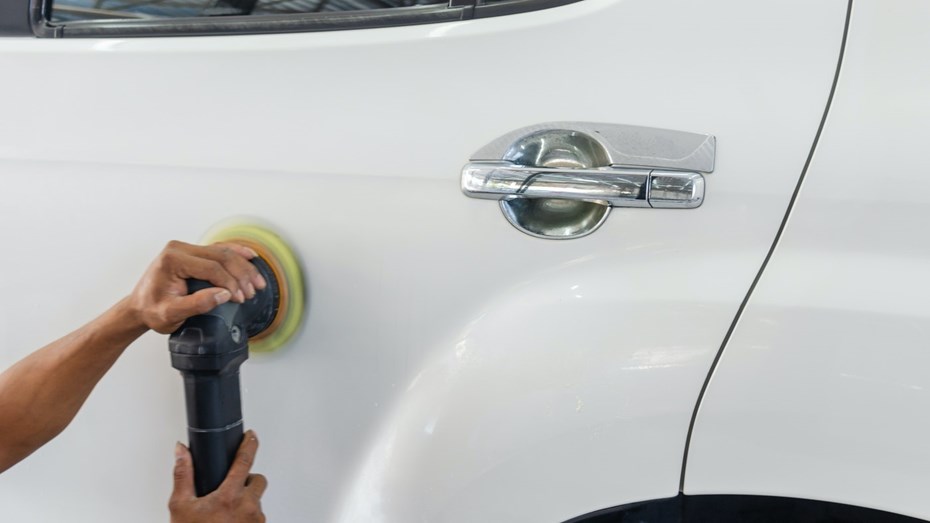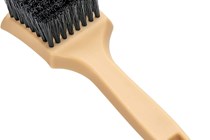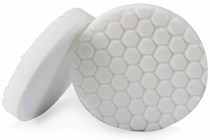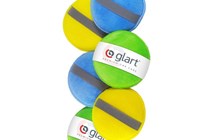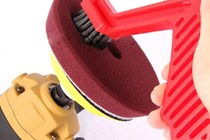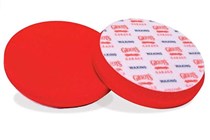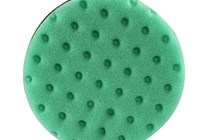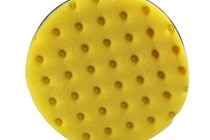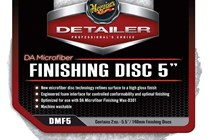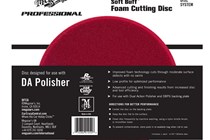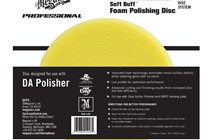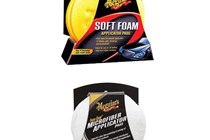You could be forgiven for thinking that any old polishing pad will do no matter what the job at hand. Unfortunately, using the wrong type of pad as you apply wax with your machine polisher could leave you with poor results or, even worse, with damaged paintwork.
There are three main types of polishing pads – foam, microfibre and wool. Wool is the oldest and most traditional, but it can be difficult to work with for people with less experience. Foam and microfibre are the safest options. Within each of these material types, there are different levels of roughness, or aggressiveness if you prefer, to tackle different types of work. For example, a heavy cutting pad will be more aggressive and can be used for working on scratch repair and paint damage, whereas a finishing pad wouldn’t have much impact on a deep scratch, but it will work polish or wax into a deep gloss shine.
So we have put together this guide on polishing pads, also called buffing pads to look at some of the different types of polishing pads, the materials used, and which ones are best for applying certain products. Our recommendations are for dual action polishers or for hand application.
The best polishing pads at a glance:
Editor’s pick: Meguiar’s DFC6 Foam Cutting Disc – Buy now from Amazon UK
Best polishing pad for tough jobs: Lake Country CCSYE5 Heavy Cutting Pad – Buy now from Amazon UK
Best hand polish multi-pack: Glart 46PP Microfibre Hand Polishing Sponge Set – Buy now from Amazon UK
The best polishing pads
Best polishing pad for beginners cutting
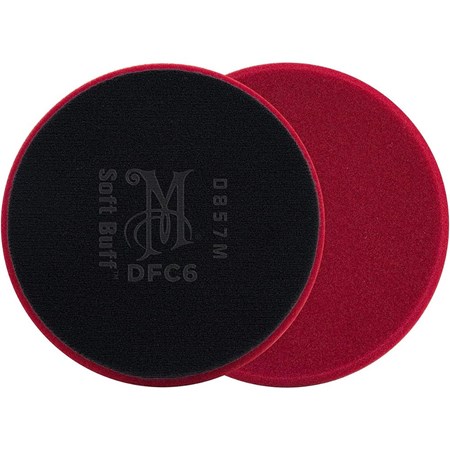

Perhaps not the most aggressive of cutting discs, this 6-inch buffing pad will deal with light swirls and scratches. It's machine washable, and the hook and loop system keeps it firmly in place as you work.
Pros
- Machine washable
- Secure fit
Cons
- Product can get fully absorbed quite quickly
Best polishing pad for tough jobs
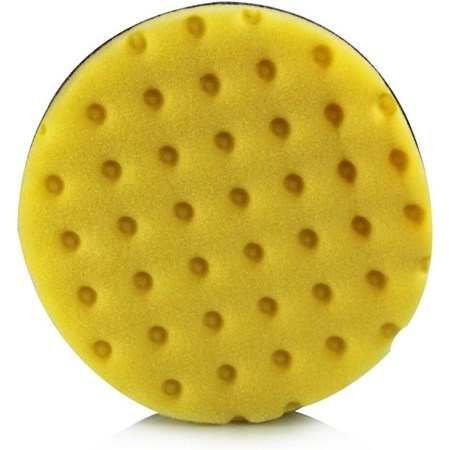

The Lake Country heavy cutting pad is a 5.5-inch pad for tackling more severe scratches. Partially closed-cell (CCS) foam allows for less polish absorption into the pad, making the product used last longer and helping reduce the heat generated.
Pros
- Slows the product absorption rate
- Reduces heat
Cons
- Perhaps too aggressive for some jobs
Best polishing pad for tackling swirls
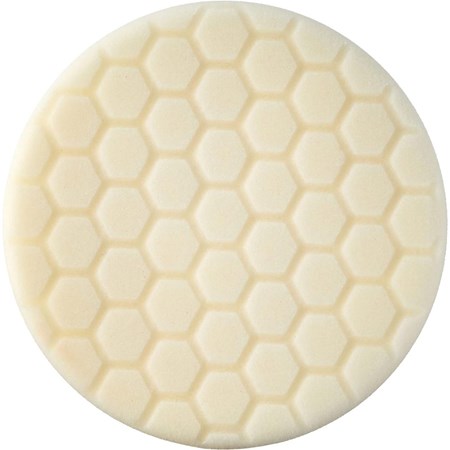

The Chemical Guys Hex Logic pad is perfect for medium to light polishing. The 6.5-inch pad restores gloss after cutting away scratches and swirls. The hex pattern gives an even spread and allows airflow to prevent overheating.
Pros
- Bendable ring for easier use
- Washable
Cons
- More than one pad needed for best results
Best polishing pad for high-gloss finish
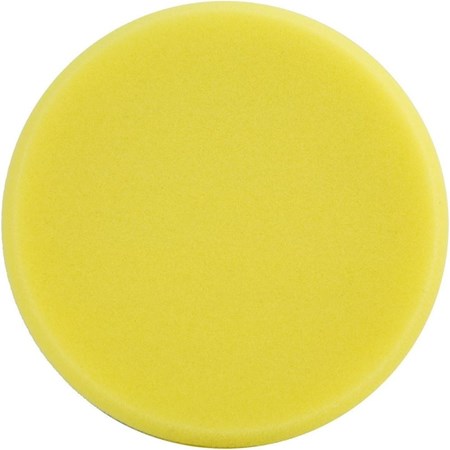

Pros
- Long-lasting
- Great results
Cons
- Can absorb a lot of product
Best polishing pad for product saving
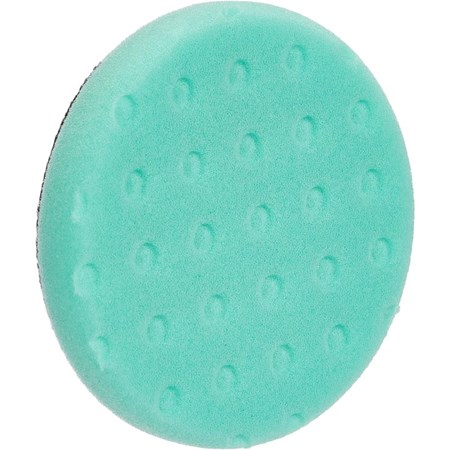

Pros
- Reduces product waste
- Polish or finish
Cons
- Perhaps not fine enough for some
Best double set
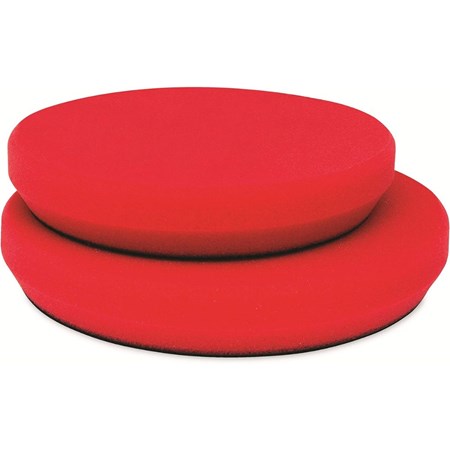

Pros
- Set of two
- Machine washable
Cons
- Uses more product
Best microfibre double-pack
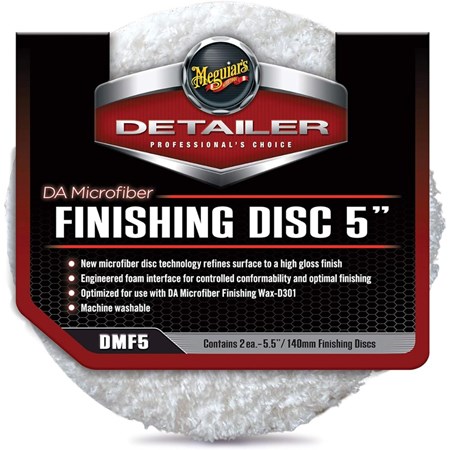

Pros
- Microfibre material
- Machine washable
Cons
- Can burn through paint if not careful
Best hand polishing set
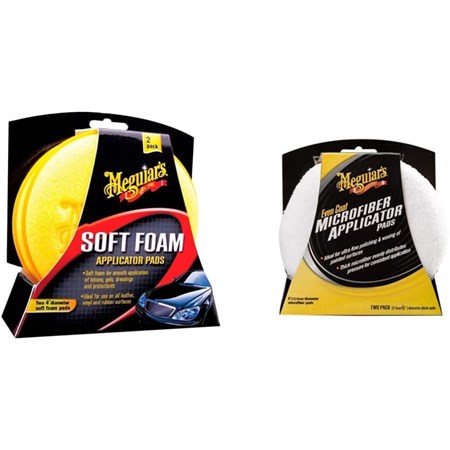

Pros
- Multi-pack
- Ideal for hand polishing
Cons
- You still need to put in some effort
Best hand polish multi-pack
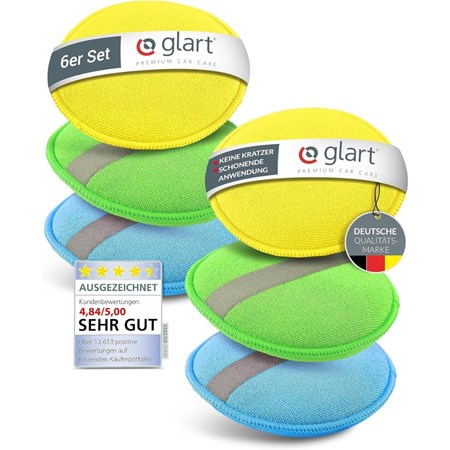

A six-pack of 135mm (5.3-inch) microfibre pads for use with any polish, wax, or sealant. The Glart Microfibre Hand Polishing Sponge feature a simple hand strap for easy use. Separate the colours for different uses. They are machine washable, too.
Pros
- Multi-pack
- Flexible usage
Cons
- Elasticity could be improved
Notes on polishing pads
There are a couple of important things to remember when buying polishing pads, in addition to getting the right ones for the job:
Make sure you get the correct size to fit your dual-action polisher. Dual-action polishers vary in size, and so do the pads.
Use different speed settings on the polisher when applying compound, polish, or wax. Compounds should use a faster speed, polish is best worked at a medium speed, and wax at a slower speed.
Different materials for polishing pads
Three materials are used to make buffing pads: foam, wool, and microfibre. Each material has different grades that each have a certain aggressiveness, depending on whether they are for use with an abrasive compound, polish, or as a finishing pad.
Foam pads are our material of choice for casual users. It is the most commonly used material for polishing pads and comes in many types, depending on their task. They can’t match microfibre for performance or wool for abrasiveness, but overall, they are easier to work with than either.
Microfibre pads are the most recent development of the three. Most of us can testify to the effectiveness of microfibre cloths for a range of uses, and it is an equally effective material here, too. There is a big range available, from cutting to finishing. The biggest issue with microfibre pads is the heat buildup. They generate more friction than foam or wool, and it means they can’t be worked for as long. But they also work faster. As such, they are very good for people who know what they’re doing.
Wool pads have been around for the longest. Because the fine wool fibres are themselves abrasive, they are excellent for use in the cutting stage with a medium or heavy cutting compound. Thus, great for paintwork with severe scratches. However, the natural trade-off is that they aren’t good for finishing. For casual DIYers, we tend to suggest sticking to either foam or microfibre pads. The abrasiveness can land beginners in trouble.
Chris Williams is an Automotive Content Writer for Parkers and CAR Magazine, but he also contributes to Live For The Outdoors and What’s The Best. He trained as an automotive journalist in New Zealand, prior to which he studied International Relations and History.
Sign up to the Parkers Newsletter to keep up to date with more of the latest reviews, news, and recommendations from the Parkers team.
Just so you know, whilst we may receive a commission or other compensation from the links on this page, we never allow this to influence product selections – read why you should trust us.



